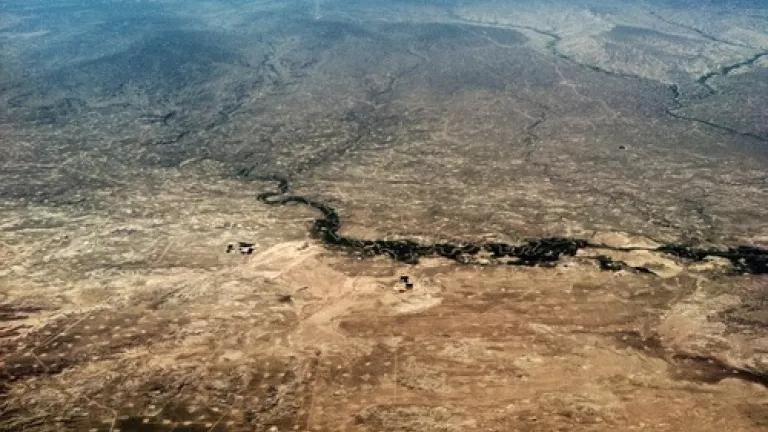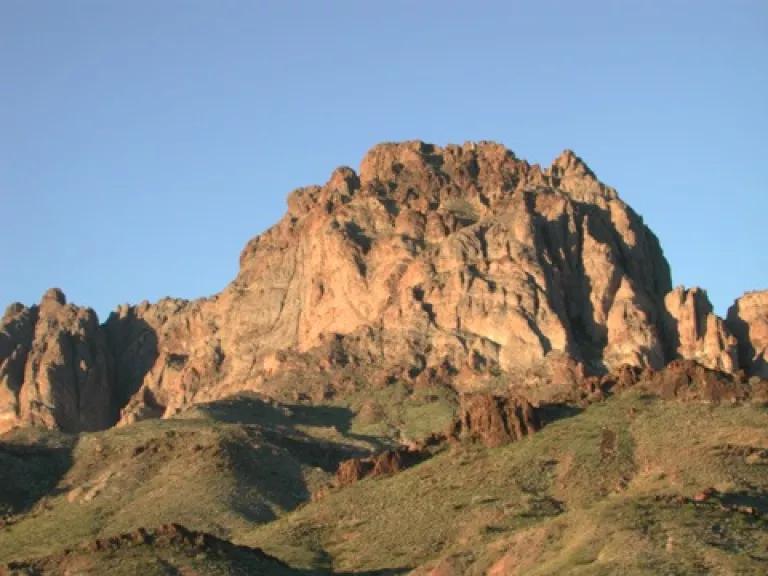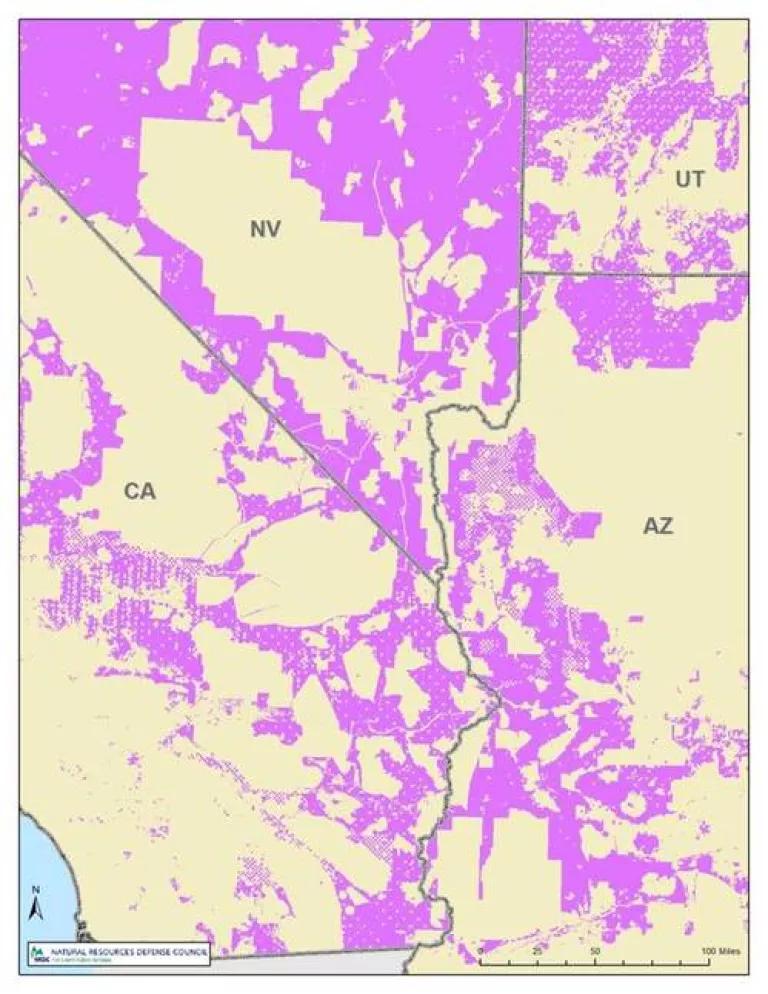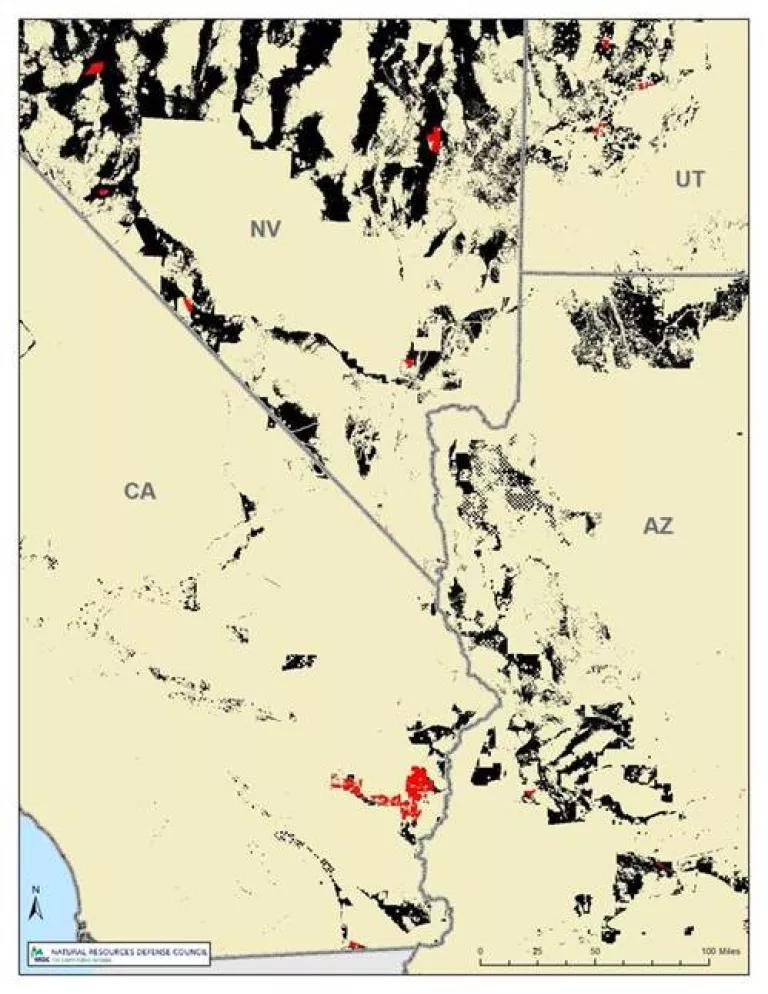Three Needed Steps in Meeting the President's Climate Goal to Double Renewables on the Nation's Public Lands

This administration should be applauded for its commitment in ensuring that our nation is a global clean energy leader – High on the list of to do items in the President’s new plan to fight climate change includes a goal to double the amount of renewable energy produced on our nation’s public lands. By meeting a target of 20 gigawatts of solar, wind and geothermal produced on the nation’s federal lands by the year 2020, the plan will help ensure that the exponential growth this nation has enjoyed in the deployment of clean energy will continue in a way that cements this nation as a clean energy leader while fundamentally addressing the global warming challenge.
Before 2009, energy development on federal lands meant one thing: the nearly unchecked drilling of oil and gas. In the last few decades, too many regions across the Western U.S. have been transformed into lunar landscapes. What were once pristine areas have become dominated by thousands of drill pads and the affiliate infrastructure that comes with such destructive practices. In contrast to the drilling archetype, the Obama administration – in its infancy – committed to a new energy vision that drove the Interior Department to permit over 10 gigawatts of clean power on the nation’s federal lands over the last four years. That vision also incorporated a set of land management principles for developing energy that had not been employed before: by creating an energy permitting framework for utility scale solar that directed development to discrete energy zones, while also precluding development in sensitive environmental areas (in total contrast to oil and gas drilling).
A western Colorado landscape dominated and scarred by drilling operations. The President’s climate plan presents an opportunity to not repeat the (recent) mistakes of the past by embracing a clean energy vision for public lands while reducing the cumulative impacts to Western landscapes. Zoning for energy will help accomplish this while avoiding the above. [Photo credit: Bobby McEnaney]
Now the President is calling for the Interior Department to repeat that major accomplishment by permitting an additional 10 gigawatts. To meet this new target, the nation will need to adopt additional tools and a complementary suite of solutions to address the challenges of siting utility scale wind and solar projects. This means that good energy and climate policy must be balanced by a class of matching actions that safeguard and conserve key lands and wildlife habitat. The following are three critical next steps that should be incorporated in achieving such a goal:
1) The Department of Interior should take steps to ensure that its renewable energy initiative becomes a permanent program that guides wind and solar projects to appropriate energy zones – The milestones we have witnessed in the permitting and construction of renewables on the nation’s public lands is nothing less than a paradigm shift. This sea change first started with the Department’s decision to drive utility solar development to discrete “energy zones” – areas with the greatest energy potential and the lowest environmental conflicts. This process of developing energy resources by screening first for environmental suitability, also known as landscape planning, was a critical departure from how energy projects are sited on public lands. Such an initiative should not be just the exclusive domain of solar development. Hence, there is no better time to apply this model to wind energy as well in committing to a similar wind zone program. By creating energy zones for wind and solar, we can create a permanent and meaningful framework to support responsible planning, development, and siting of renewable projects on public lands that will work for decades to come.

Turtle Mountain Wilderness in California – If not for the solar zone program, this pristine area could have been impacted by energy development. With the President’s new climate plan, the Obama administration is uniquely positioned to embrace zones for other types of clean energy development so that outstanding areas like Turtle Mountain can be shielded from the impactful activities associated with energy development. [Photo credit: BLM]
In addition, the administration must take the necessary steps to make the process of siting renewables a permanent program under the jurisdiction of the Interior Department. Unlike the Interior Department’s drilling programs, under which thousands of oil and gas drilling permits are processed annually, the renewable energy program does not exist as standalone program. With a change in administration, resources dedicated now to processing wind and solar projects could literally be abandoned in the future by the Interior Department. In order to reach the President’s 10-gigawatt target by 2020, it is imperative that the Bureau of Land Management renewable energy program be elevated to a distinct and fully independent program.
2) The administration should work with Congress to pass existing bipartisan legislation to implement needed reforms for how renewables are managed on public lands – Much of the existing process for wind and solar project development on public lands is based on an antiquated permitting system designed in the 19th century to accommodate the permitting of ditches and railroads, not large scale 21st century energy technologies. The current process is dependent on a “rental” permit or “right-of-way” authorization – this process is in contrast to how other energy systems are managed, such as oil and gas and geothermal, all of which involve a “leasing” process. A leasing process requires competitive bidding which allows the agencies greater latitude in strategically identifying in advance what lands can and should be offered for development based upon environmental suitability and the relative richness of the given energy resource, while avoiding the pitfalls associated with the “first come, first serve” right-of-way system.
But bipartisan legislation has been introduced that would rectify this inefficient regulatory system. Sponsored by a number of key Western senators and representatives including Senators Jon Tester (D-MT), Dean Heller (R-NV), Mark Udall (D-CO), James Risch (R-ID) and Representatives Paul Gosar (R-AZ), Joe Heck (R-NV), Jared Polis (D-CO) and Mike Thompson (D-CA), the Public Lands and Renewable Energy Development Act of 2013 (PLRED) calls for a competitive, royalty-based leasing system. Furthermore, a portion of revenues generated from a royalty on energy production would be directed toward local governments where a project is being developed. And more importantly, PLRED would also dedicate royalties to a mitigation fund to offset the impacts from development, to benefit and protect key wildlife habitat.
3) Additional electrical transmission initiatives will be necessary to deliver renewable energy –In concert with embracing aggressive energy efficiency and distributive generation measures, getting more renewable energy onto the grid while increasing sensitivity to the cultural and environmental impacts – as we modernize and expand our transmission system – will benefit all of us long into the future. To take advantage of the benefits of renewables, we must improve coordination among federal and state entities. And considering generation and transmission together can represent a best practice, because coupling these two processes can greatly help reduce environmental resource conflicts and optimize location of these types of infrastructure.
As NRDC has written before, the direction provided from stimulus funding and FERC Order 1000 represents a revolutionary new planning and cost-allocation approach where: beneficiaries pay; that opens regional transmission planning to diverse stakeholders; considers non-wire alternatives to transmission to meet electricity demand; incorporates compliance with federal and state policy goals as a major factor in choosing which interstate transmission lines to build and allocate costs for; and identifies beneficiaries to ensure that costs are fairly spread among customers.
In comparison to 2009, developing renewables in 2013 means a whole set of new challenges – The first four years of the administration’s efforts to deploy clean energy was a game changer. But this priority effort, which started in earnest in 2009, also benefited from a set of additional circumstances that greatly helped get renewables off the ground. This included an influx of capital from investors that were eager to invest in clean energy (in anticipation of what seemed a likely price on carbon emissions), federal stimulus funding which helped projects overcome a number of preexisting institutional hurdles that had dogged prior efforts to deploy renewables at a larger scale, and aggressive state renewable targets such as the one mandated by California. Many of those advantages no longer exist. That is why the preceding recommendations are so essential. If we have any hope of meeting this latest ambitious target, these three regulatory and legislative recommendations will have to be part of the equation in overcoming the latest set of challenges. But if the administration continues to recognize that a Smart from the Start approach to the development of generation and transmission projects is the key to success, this continuing transition to a clean energy future will be all that more certain.
Why Zones Are the Key to Deploying More Renewables:

The Old Approach for Developing Solar on Federal Lands (open area for solar in pink):
- 80 million acres open for development (in pink)
- Few guidelines to guide project development
- Few specific protections for wildlife
- Millions of acres of wilderness quality lands and critical wildlife habitat are exposed for development
- First come first serve for solar project permits creates chaos and uncertainty for solar developers
- Over 300 solar permit applications are accepted by the Interior Department, but ZERO applications are developed
- The Interior Department lack the tools to screen pending solar applications for economic viability and environmental suitability

The New Solar Zone Approach - post 2012 (Solar zones in red. Secondary developable areas in black):
- Zones + secondary “Variance” areas are established (zones in red, variance area in black)
- 17 Solar Energy Zones in 285,000 acres, between 18-19 million acres of variance acres are available
- Solar zones are prescreened to expedite the permitting process for solar applications
- Solar zones also are determined for their richness of their solar resource and access to needed infrastructure, such as electrical transmission
- A Department of Energy analysis determines that the energy potential within the 285,000 acres of the zones can easily meet if not exceed future energy demands in the Southwest
- Areas that contain critical habitat have been precluded for development
- Meaningful protections for wildlife and critical habitat are adopted
- Additional areas outside of zones could be potentially developed if strict environmental criteria can be met when developers apply for a permit in a "Variance Area"
- Variance process should be weighed as the exception, zones are the default

